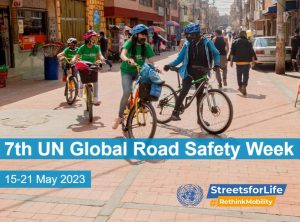
UN Global Road Safety Week 2023
UN Global Road Safety Week is an annual event held in May to raise awareness about road safety and the importance of taking steps to prevent accidents. The week is organized by the World Health Organization (WHO) and the UN regional commissions, and it is supported by a wide range of partners, including governments, NGOs, businesses, and individuals. The week was first marked in 2007. It was no longer observed until 2013, and it had been recorded every two years since then until 2019. It is a special global road safety campaign hosted by the World Health Organization (WHO) that aims to raise awareness about road safety and accident prevention.
Buy Prime Test Series for all Banking, SSC, Insurance & other exams
UN Global Road Safety Week 2023: Theme
The 7th UN Global Road Safety Week will take this year from 15-21 May. The theme is sustainable transport, and specifically the need for governments to facilitate a shift to walking, cycling and using public transport. Road safety is both a prerequisite for this shift to happen and an outcome of it. The slogan is #RethinkMobility.
The WHO estimates that road traffic injuries are the leading cause of death for people aged 5-29 years worldwide. In 2020, there were an estimated 1.3 million road traffic deaths, and many more people were injured. The vast majority of these deaths and injuries could have been prevented.
UN Global Road Safety Week is an important opportunity to raise awareness about the dangers of road traffic and to take steps to make our roads safer. By working together, we can save lives and improve the health and well-being of people all over the world.
Key messages of the 7th UN Global Road Safety Week:
- Governments and their partners need to rethink mobility – this includes investing in walking, cycling and using public transport, which can promote equity and health for people and the planet.
- Safety must be at the core of efforts to reimagine mobility – this puts road safety at the core for all road users.
- Thus road networks must be designed with the most-at-risk in mind – children, adolescents, persons with disabilities, pedestrians, cyclists, and users of public transport.
- Walking and cycling, when safe, contributes to people’s health and makes cities sustainable and societies equitable.
- Safe, affordable, accessible and sustainable public transport solves many of society’s ill.
You may also read this:




 World Basketball Day 2025 Celebrates Bas...
World Basketball Day 2025 Celebrates Bas...
 UN Celebrates Second World Meditation Da...
UN Celebrates Second World Meditation Da...
 Winter Solstice 2025 Observed on Sunday,...
Winter Solstice 2025 Observed on Sunday,...







